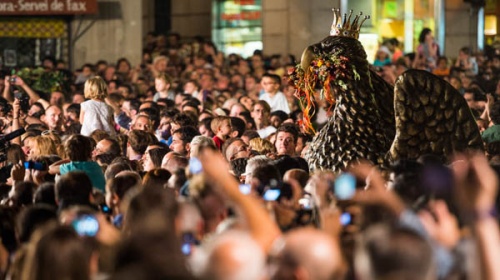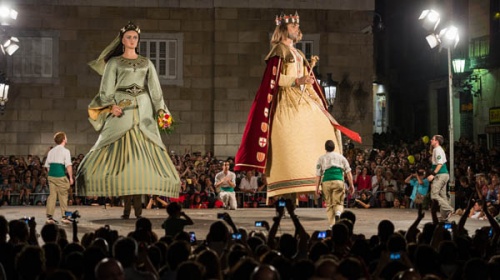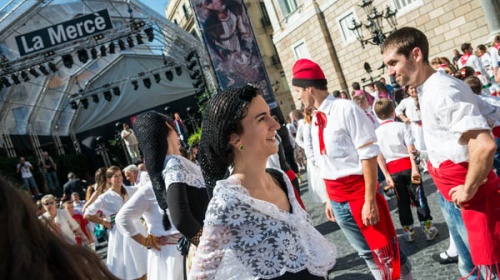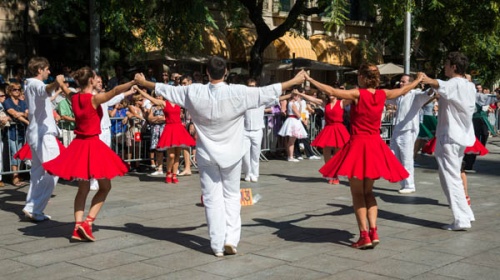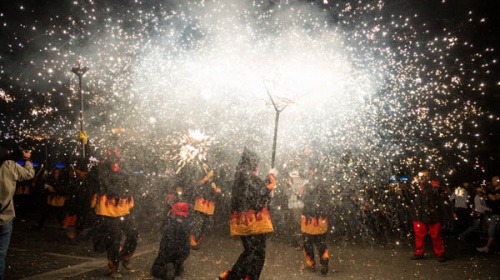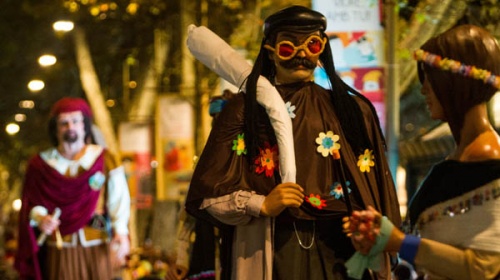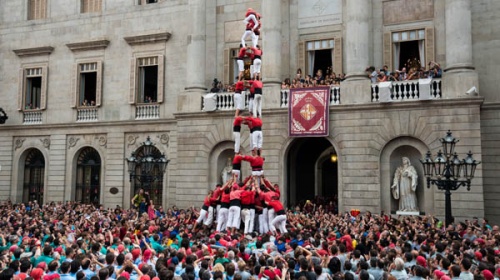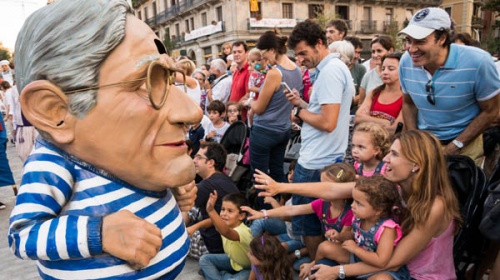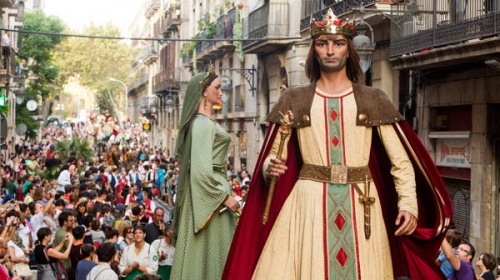Festes de la Mercè
Activity dates
Dates de celebració
Around the festival of Mare de Déu de la Mercè (Our Lady of Mercy)
Feast day: 24th September
Description
The festival of Mercè, the patron saint of Barcelona, is celebrated each year around the 24th of September in squares and streets across the city.
It is a short but intense festival, chock-full of diverse cultural activities for all ages. Among the many events, highlights include the morning of the festa major, the main day of celebration, the Mercè cavalcade, the huge correfoc fire run, the procession of Gegants i Nans (giants and dwarfs), the human towers, and the dances from around Catalonia. Also important are the many and varied cercavila parades. This is one of the oldest traditions in the city, descended from the Corpus Christi processions which were already taking place as early as the 15th and 16th centuries.
Reason
The festival pays homage to the Patron saint of Barcelona who is attributed several miracles linked to the city. Legend has it that on 24th September, 1218, Our Lady of Mercy simultaneously appeared to King Jaume I, St Pere Nolasc and St Ramon de Penyafort and charged them with setting up a religious order to rescue the Christians who were being held hostage Saracen lands. Some centuries later, in 1687, Barcelona was attacked by a terrible plague of locusts and the city invoked the protection of Our Lady of Mercy. When the insects left, the people proclaimed her the patron of the diocese, although this was not made official until 1868, under Pope Pius IX.
Origins
In 1868 Barcelona began celebrating religious and folk festivals in honour of Mare de Déu de la Mercè, around 24th September. Even so, during this last third of the 19th century, the celebration suffered some serious highs and lows. It was in 1902, under a strongly Catalan and conservative municipal government, that for the first time a big festa major aimed to demonstrate the diversity of folk traditions in the country through a variety of cultural activities, many of which had disappeared from the city: balls de bastons (stick dances), balls de diables (devil dances), giants and beast spectacles, castells (human towers), and sardana dances.
Constant clashes between those who were in favour of a conservative religious festival and supporters of a secular folk event with parades, decorated streets, dancing and fireworks, meant that the celebration weakened between the 1920s and 30s. And after the 1936-1939 war, it gained an air of national catholic passion and strict Francoism. In the sixties the festivities began to include some folk elements.
The festes de la Mercè as we know them today came about along with democracy, when Barcelona City Council decided to completely transform the big annual festival into a celebration where popular culture and the general public took to the streets to have fun. They gave the task of designing the festival to a small group of cultural activists, who used the surviving traditional celebrations of surrounding towns, like Garraf and Penedès, as their model. The Barcelona locals eagerly accepted this festival format, which has become further consolidated over the past thirty years.
Alongside this effort to regain the festival, groups of geganters, bestiari, bastoners, castellers, and diables, with their giants, beasts, stick dances, human towers and devils, have emerged in the city, as well as traditional music ensembles. Little by little, they have been the recovering dances, rituals and figures that are an essential part of the festival today.
Did you know...
Sabies que...
The Seguici Popular de Barcelona is the embodiment of a research project on Barcelona's unusual, historic and unique references which have a symbolic function within the festival. It was set up in 1993 and contains the city's festival imagery – the Àliga de la Ciutat i els Gegants de la Ciutat, the eagle and giants–, historical figures like the Gegants del Pi and others recreated from historical documents: the Gegants de Santa Maria del Mar, the Bestiari Històric de Barcelona –the Lion, the She-mule, the Ox, the Wyvern, the Dragon of Ciutat Vella, the Cottoner Knights (Cavallets Cotoners) and the Fierce worm (the Tarasca or Cuca Fera)– and the Macers big-heads. The Seguici, which has a protocol regulating the outings and performances, is very important in the festes de la Mercè because it is part of the seguici inaugural, the Toc d’Inici and the seguici d’autoritats.
About festivities
Supplementary information
Organisers
Barcelona City Council.
Other websites
Materials
Protocol festiu de la ciutat de Barcelona. Barcelona City Council. Institute of Culture.



